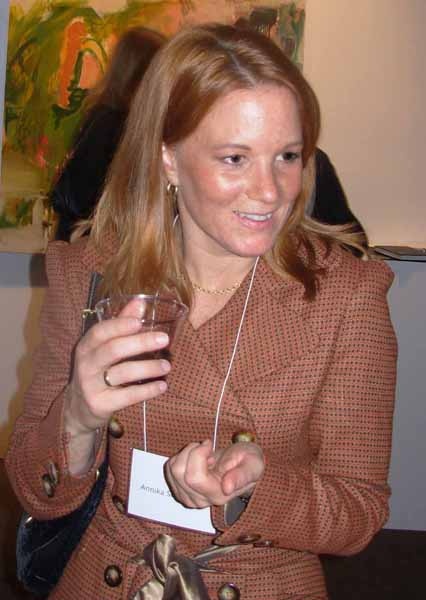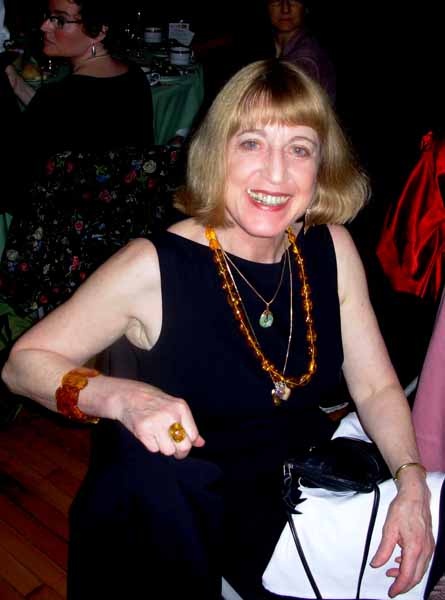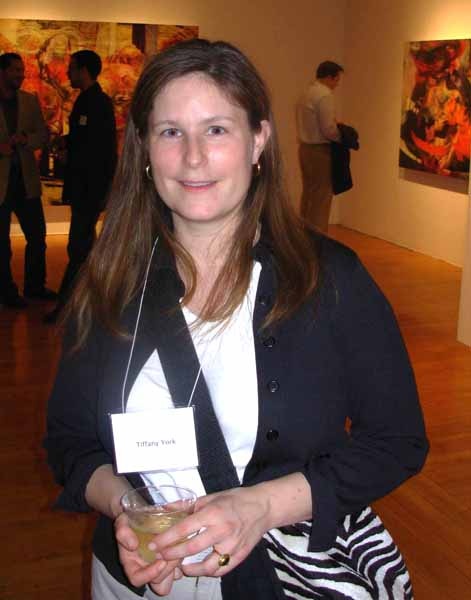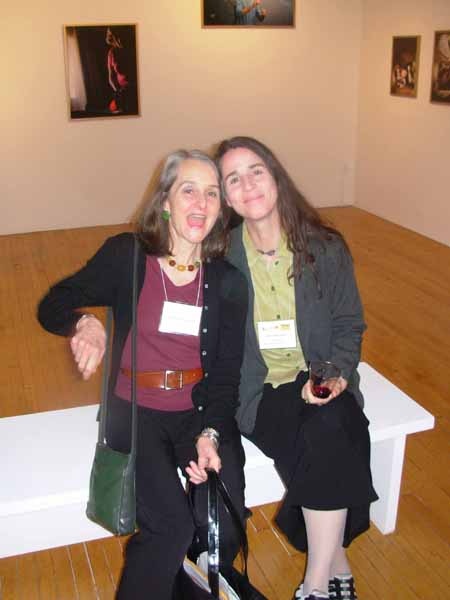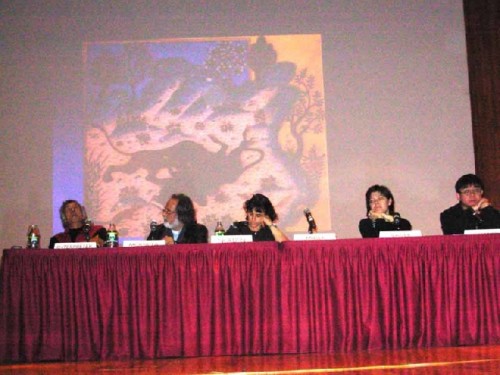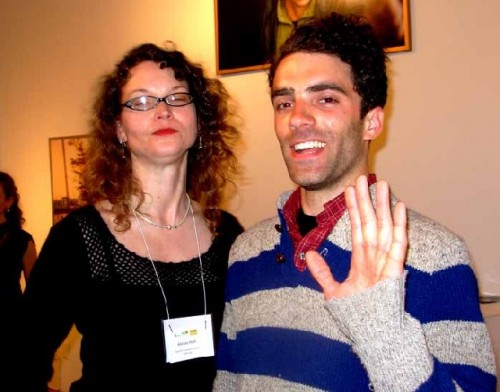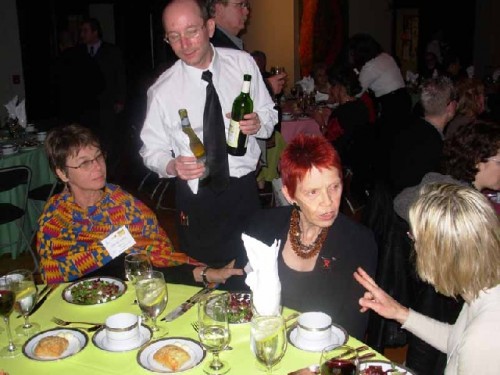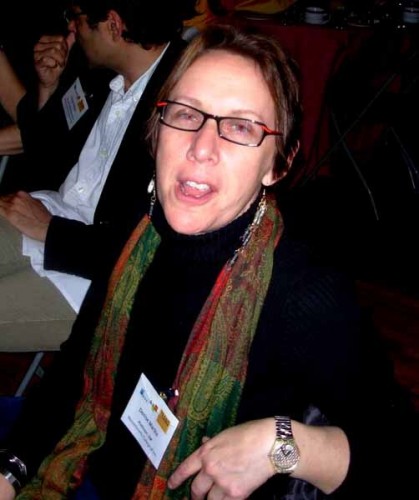Mary Sherman's TransCultural Exchange Hosts Boston Event
2007 Conference International Opportunities for Artists
By: Charles Giuliano - May 02, 2007
It may take several years to measure the impact on the Boston arts community of the ambitious three day event, April 27 through 29 "2007 Conference International Opportunities for the Artists" organized by Mary Sherman, the artist director of TransCultural Exchange, in class rooms and auditorium spaces provided by the Massachusetts College of Art, Northeastern University, and MIT. There were also related events for visitors at the Institute of Contemporary Art, the Boston Center for the Arts, and by BADA, the Boston art dealers association and participating galleries. The weekend overlapped the annual Cyberarts Festival.
With such time constraints and many simultaneous sessions and programs it is impossible to absorb all of the information that was disseminated in the many panels, workshops, mentoring sessions, and receptions. At best one may hope to convey an overview or menu of opportunities. It is now up to artists and the organizations they interacted with to sort out practical applications of the information on how to move forward with applying to the vast array of residencies and related programs that were highlighted in the weekend long conference. There were several hundred artists, the majority representing the many academic institutions in the Boston area, including faculty, students and recent graduates. But there were also artists and presenters from all over the United States as well as the many international participants.
As a community with such richness and diversity of educational institutions it is significant that the conference was staged in, and will have an enormous impact on, the Boston arts community. Generally, Boston is regarded as a more conservative and secondary arts community when compared to other creative centers. This may well describe the commercial art galleries and the more accessible artists they represent. But there are other more progressive elements in the community who are often off the map of the Newbury Street and South End galleries. There are many professors at the numerous colleges and universities who show and have reputations internationally. Most of these educators do not fit comfortably into the restraints of the mainstream and conservative programming of even high profile institutions such as the Museum of Fine Arts, or the Institute of Contemporary Art which have historically played a disconnected role with the Boston artist community.
Too often Boston seems like an arts community in which the left hand does not talk to the right hand. And yet anyone who is out and about will report that there is an enormous range of activity representing numerous off the radar academic programs as well as non profit presenters. Only a tiny increment of this activity is covered by the Boston Globe, the Boston Herald has abandoned covering art, and the "alternative" Boston Phoenix is at best hit and miss. As a bimonthly publication the coverage in Art New England is limited and reviews may occur as many as four months after an exhibition. At best no more than one review per issue of a Boston based show appears in the national arts publications such as Art News, Art Forum and Art in America. On a national and international level what happens in Boston is not considered to be of importance. This is an oversight which marginalizes the cutting edge work of the List Visual Arts Center at MIT, which is truly first class, or the program of the Rose Art Museum. While museums such as the deCordova, Danforth and Fuller Museum of Art are supportive of regional artists their programming may get the occasional Globe review but is almost never covered by national media.
While Boston is home to a thriving and significant arts community, news and excitement about its activities and reputations tends not to reach beyond city limits. But conferences and efforts such as those of Sherman's TransCultural exchange may go far and wide over the next few years to change that. The provocative thesis is what happens when a significant number of Boston and regional artists on every level of career, age and critical reputation start to network nationally and internationally in the numerous residence and exhibition opportunities which were discussed and promoted during the conference. There is a back story to this as well when the many artists/ faculty network with international programs and convey to their schools/ colleges/ universities initiatives of bringing back to the city for residences, conferences and exhibitions the many artists, curators and critics they encounter as participants in these diverse programs.
During the gala dinner on Saturday night Kay Sloan, the President of Mass College of Art, the nation's oldest and largest state supported art college, informed guests that the college has the ambition that all of its students will have the opportunity to study abroad. That there are already several programs in place and that the college hopes to expand on that with the understanding that there will be considerable fund raising entailed.
"These are my friends" Sherman commented as she posed for pictures with a number of artists and program directors. The conference was a natural evolution of her hard work and networking over many years. The initial concept of TransCultural Exchange was to work with a small circle of international artists to come up with simple and cost effective means of showing their work in numerous global locations. For the Coaster Project, for example, some 100 artists were invited to make editions of 100 coaster sized objects and images. These were shown in a variety of setting and generally the works were distributed free to the public. I hosted a display of a set of the coasters in my exhibition program for the New England School of Art & Design at Suffolk University. As a participant in the project it is intriguing to think that a hundred examples of my work are scattered about the world. The organization has also executed a similar Tile Project but the unique objects have been kept intact and are continually circulated and reconfigured in global venues. TransCultural Exchange produced a slip cased thick catalogue of the work which consists of individual post cards and accompanying text. A number of the boxes were distributed to guests at the Friday night dinner for presenters.
Over many months Sherman and a dedicated group of volunteers, including Chief Liaison, Janna Longacre, of Mass College of Art, and a team of contacts from the sponsoring institutions met with her to plan the event. For Sherman, in addition to adjunct teaching at Northeastern and Boston College, this has been a 24/7 involvement for months. During the actual conference she was visible darting about working with volunteers and dealing with glitches and last minute adjustments. She seems to be in perpetual motion. Last summer, for example, she was commuting in and out of Boston to residences in Romania, Taiwan and Beijing. Just being around her provokes a contact high and contagious energy.
Because our access to the overall conference and its multi level events was limited we can provide only glimpses of the program and its impact. There was a lot of networking with friends and artists all sharing insights regarding sessions they attended or one on one mentoring sessions. These reports varied. One common issue was language. Many of the presenters had poor command of English or were inexperienced in public speaking. There were also program directors representing corporations, foundations and government agencies. These individuals represent full time employees who are more skilled in the intricacies of power point and the dynamics of participating in conferences. But some of these presentations, while interesting in providing an overview of information, proved less relevant as the programs they represent are geared to institutions and curators and not so much to individual artists. On the other hand, some of the most poignant moments occurred when directors of often very small, grass roots residences and programs spoke from the heart of their passion and commitment.
The programs described also vary greatly in the profile of who qualifies and what are the expectations. Many programs require that artists pay most if not all of their transporation and per diem costs. The host provides studio space and sometimes simple and even primitive accommodations. Artists may find themselves in remote and isolated locations be it in Banff, Malta, Estonia, a village in Ireland, a city in Hungary, a village in Tiawan, or a Dune Shack in Provincetown. Often the presenters discussed expectations that artists participate in workshops, educational programs or donate some if not all of the work to subsequent exhibitions, collections and publications. Many of the presenters hope that the visits by international artists will have a real impact on institutions and the communities which host residents, such as the small art college in Ireland whose representative we spoke with during dinner. These expectations range from purely utopian to quite corporate or bureaucratic. Frankly, the presentation on the art in embassy residences sponsored by our Department of State seemed not particularly user friendly to artists who loan work, with no compensation but all costs covered, for up to three years. Other than a line on the resume there seemed little benefit to artists other than patriotically contributing to a free decorating program for a government agency.
Often when attending conferences such as this there seems to be a gap between the haves and have nots. A close study of what was conveyed reveals that artists need resources, skills and motivation to connect with available residences. For programs that offer support and stipends the level of competition is intense. Even well established artists have conveyed to me the frustrations of applying year after year to specific residence programs. This is particularly intense during the summer season when schools are not in general session. The level of competition escalates. But during the school year most artists have commitments and don't have the time to participate. Some programs are particularly attractive to professors on sabbaticals. In general there are greater opportunities for artists with resources and flexible schedules. One also surmises that artists such as Sherman, who have made the efforts and gotten connected, greatly enhance their opportunities for further travel, exhibitions and residencies. What makes her unique is willingness to generously share her friends, contacts and resources.
There is a general perception among artists that they get less support for such opportunities in the U.S., which has largely cut back federal and state funding for individuals to little or none, when compared to Europeans. Recently a young and ambitious Native American artist conveyed to me that he was considering moving to Canada because of its far greater funding and resources for indigenous creators. During the Sunday session at Kresge Auditorium at MIT on Biennales and Documenta, however, Ute Meta Bauer, who was part of the curatorial team for documenta 11 modified that impression. She discussed the five platforms of that project culminating in the exhibition in Kassel Germany which is held every five years. She described sessions in the Third World where documenta was moved to the location of dialogues on democracy unrealized, and post colonialism, or the strife of African cities. The curators took the dialogue to the source of the debates precisely because the participants did not have resources or the ability to obtain visas to attend conferences held at major European locations. In another session Catherine Merrill, who is trying to initiate a program with Cuban and American artists, discussed the many difficulties because of the Embargo and Homeland Security which have all but eliminated cultural exchanges.
Even a few years ago, when Bauer was working with the Nigerian curator, Okwui Enwezer, and a team of curators, they struggled to find relevance for documenta during a time when there were 60 biennales. She reported that this number has now risen to 120 such international events. Linda Norden who discussed the Ed Ruscha project for the American Pavilion of the last Venice Biennale, which she co curated with Donna De Salvo, described the pressures and constraints of having a short window of a couple of years to initiate a major project. She and Bauer discussed how curators in such a position tend to make projects entailing work they are already familiar with. Much of the work familiar to curators on that level is derived from a highly selective itinerary of visits to those other biennales and high profile exhibitions in major cities. Traveling that biennale circuit tends to create the impression of a closed loop of familiar work. Or what has been described as Festival Art. Generally this involves big work produced by well known artists.
This is also the kind of work that ends up in major museums such as the Christoph Buchel project which is on indefinite hold at Mass MoCA. These mega artists have entourages and staff who install their work internationally. Artists from Jeff Koons to Matthew Barney and Damien Hirst run their own art factories with annual budgets in the millions. While David Hockney and Brice Marden commute to a network of homes and studios. Even Picasso never functioned with such staff and resources as those commanded by the leading or most famous artists today.
So how does the individual artist break into this closed circuit? Perhaps artists have to do more tough self scrutiny and planning. Just how do I position myself to have even the remotest possibility of functioning internationally? Also, is the work that I am doing going to function on that level? The work that may get you into a Newbury Street Gallery and something of a local reputation isn't going to cut it on the festival circuit. The notion that if I make great art eventually it will be recognized is not an effective strategy. Getting involved with researching and applying to one of the many residence programs is a step in the right direction. Thanks Mary for sharing this with us.
TransCultural Exchange Website:
http://www.transculturalexchange.org





